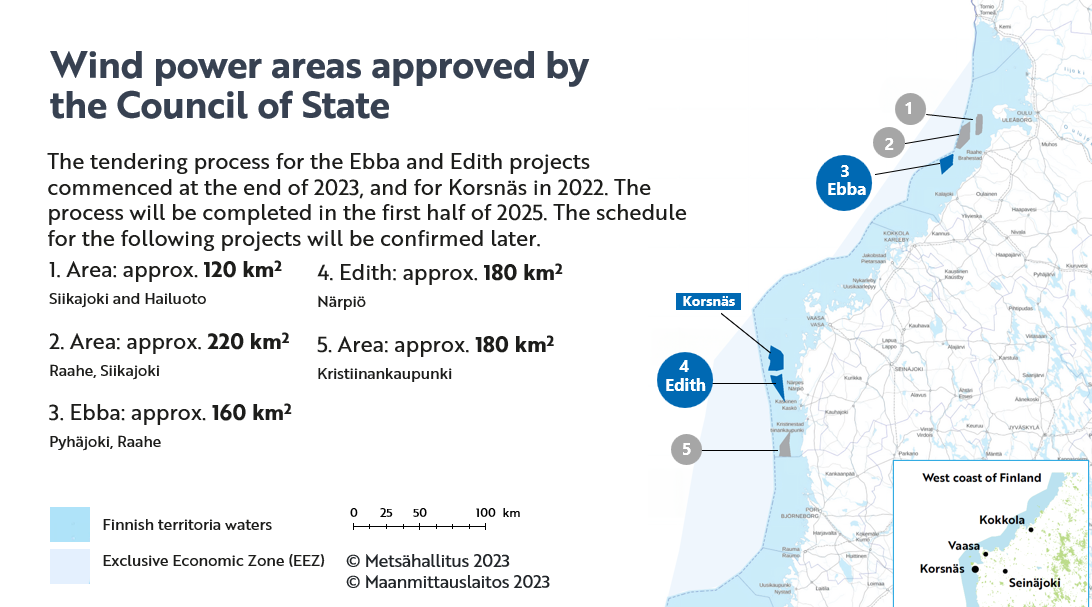Our offshore projects
Metsähallitus continues the development of three offshore wind power projects (Korsnäs, Ebba and Edith). We will decide on the timing of the next tender once the situation regarding the economic zone and Åland has become clearer, and the offshore wind power coordination group led by the Ministry of Economic Affairs and Employment has started its work. New projects are already included in the maritime area plan and provincial plans or their drafts.
The will of municipalities plays a significant role in the selection of areas, as municipalities are responsible for zoning in public water areas. The selection of the first areas to be brought to the market was also influenced by e.g., preliminary information on the areas’ buildability, the transmission capacity to the main grid and the energy need of industry.
The Council of State approved five offshore wind power areas at the end of 2023, and we immediately initiated the tendering process for the Ebba and Edith projects. In this process, we will be searching for a responsible implementer for the projects. The process is expected to take approximately one year.
